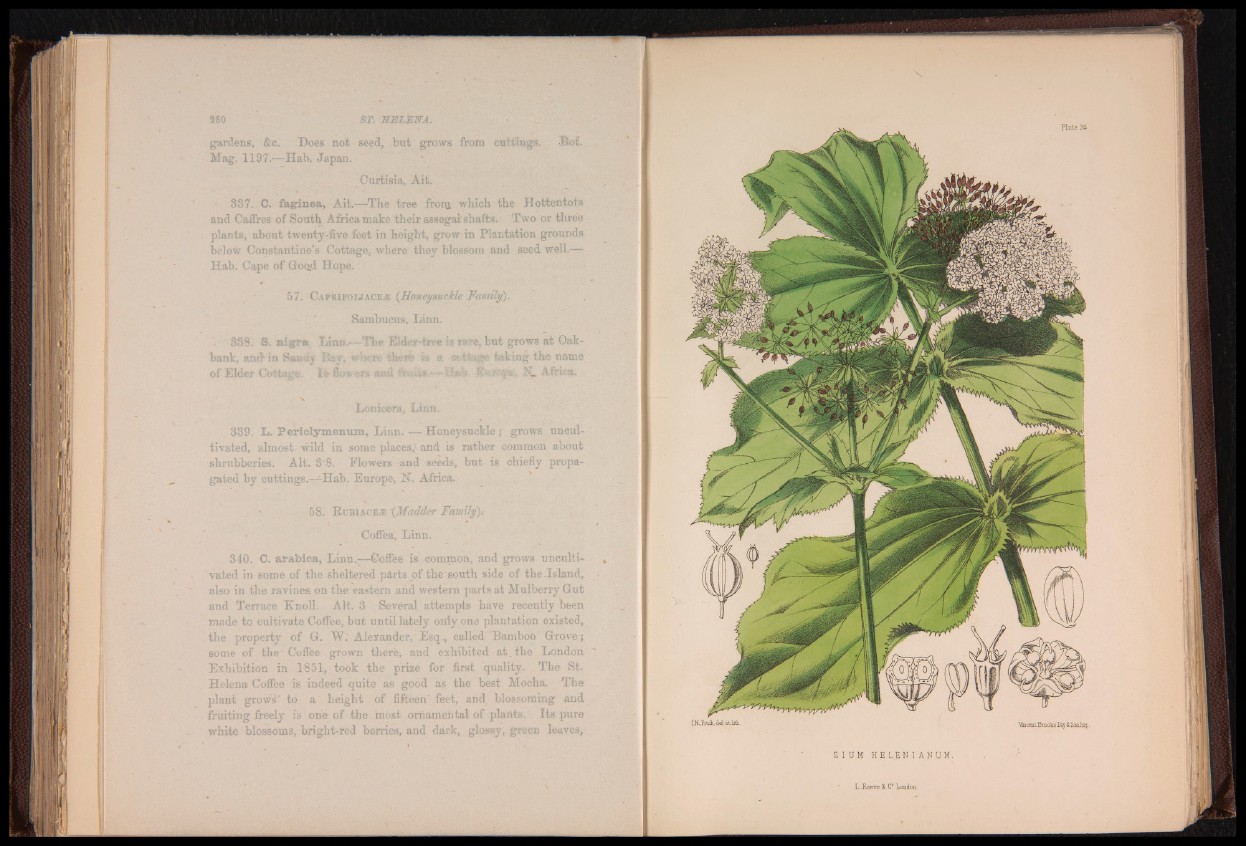
gardens, &c. Does not seed, but grows from cuttings. Bot.
Mag, 1197.—Hab. Japan.
Curtisia, Ait.
837. C. faginea, Ait.—The tree from which the Hottentots
and Caffres of South, Africa make their assegai' shafts. Two or three
plants, about twenty-five feet in height, grow in Plantation grounds
below Constantine's Cottage, where they blossom and seed well.—
Hab. Cape of Good Hope.
57. C a p r i f o i j a c i l -e (.Honeysuckle Family).
Sambucus, Linn.
838. S. n ig ra Linn.—The Elder-tree is rare, but grows at Oak-
bank, and in Sandy Kay, where thei% is s -sottage taking the name
of Elder Cottage, lb thmors «ad Samf®. JSL Africa.
Loricera, Linn.
339. L. Periclymenum, Linn. — Honeysuckle; grows uncultivated,
almost wild in some places,' and is rather common about
shrubberies. Alt. 8‘8. Flowers and seeds, but - is chiefly propagated
by cuttings.—Hab. Europe, N. Africa.
5 8 , E u b i a c e j e {Madder Family):
Coffea, Linn.
340. C. arabica, Linn.—Coffee is common, and grows uncultivated
in some of the sheltered pdrts of the south side of the Island,
also in the ravines on the eastern and western parts at Mulberry Gut
and Terrace Knoll. Alt. 3 Several, attempts have recently been
made to cultivate Coffee, but until lately only one plantation existed,
the property of G. W.' Alexander, Esq., called Bamboo Grove;
some of the'Coffee grown there, and exhibited a t. the London
Exhibition in 1851, took the prize for first quality. The St.
Helena Coffee is indeed quite as good as the best Mocha. The
plant groWs" to a height of fifteen' feet, and blossoming and
fruiting freely is one of the most ornamental of plants. Its pure
white blossoms, bright-red berries, and dark, glossy, green leaves, IN. Pitch, del ethth. ASncentBroolisTajr & Sontop.
S I U M H E L E N ! A N U M .
L .Reeve &. G° London.